Fergus Garrett has been head gardener at Great Dixter in East Sussex for more than 30 years. For the first 13 years, he worked side by side with Dixter’s owner, the gardener and writer Christopher ‘Christo’ Lloyd, helping to cement Dixter’s reputation as one of the UK’s most innovative gardens. Here he picks 11 plants that always stop him in his tracks. 'I love them for their architecture and impact,' he explains.
You may also like
- Christopher Lloyd and the legacy of Great Dixter
- Get the Great Dixter look with plants Fergus Garrett couldn't live without
- What I learned at Great Dixter
- A Kent garden inspired by Great Dixter's borders
Great plants for impact in the garden
Beschorneria yuccoides
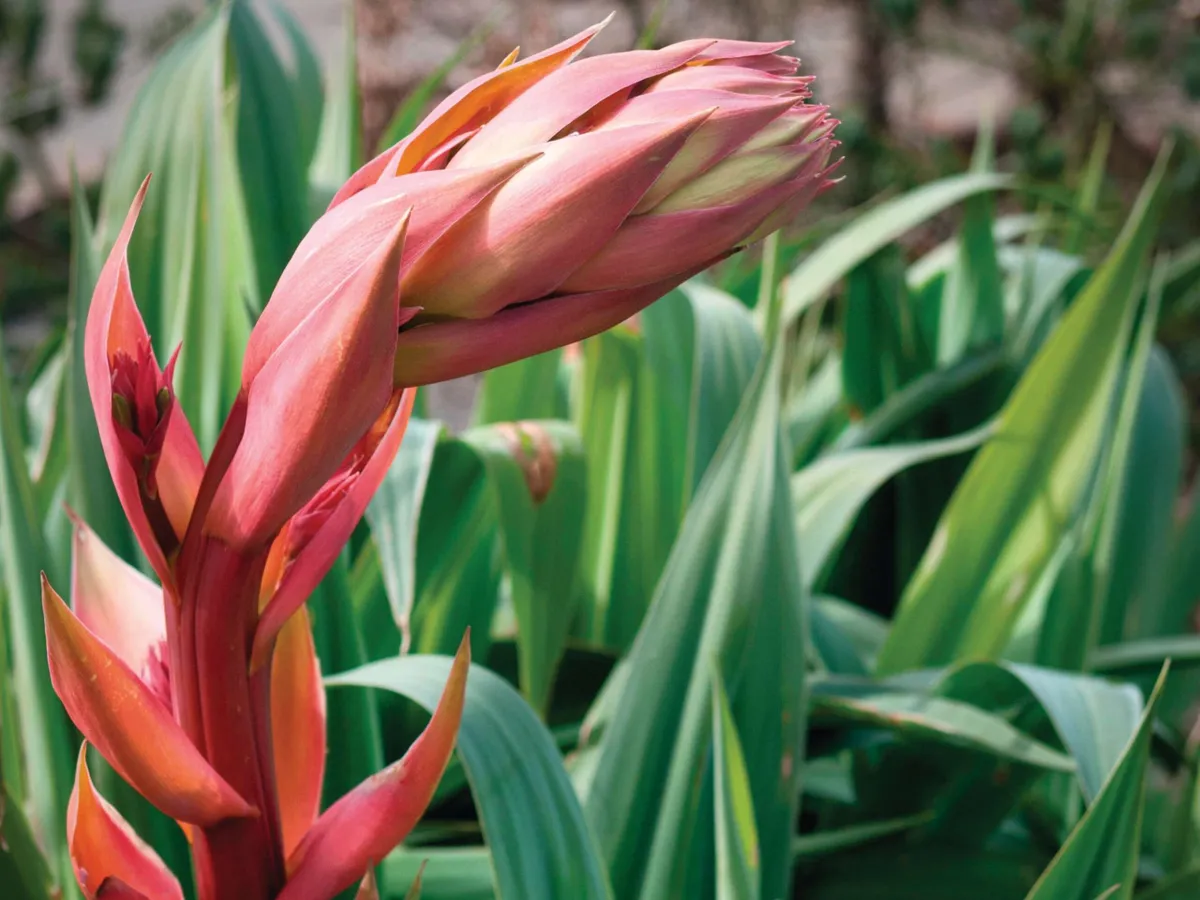
A yucca-like plant that has a little more swagger. It is armed with bluish-grey, sword-shaped leaves ending in a reflexed point. Makes a striking punctuation. In April and May, the largest rosettes push up dramatic, arching, coral-pink stems, bearing nodding green flowers. The flowering rosettes die, giving way to offsets, which take several years before reaching maturity and flowering. Hardy in the mildest areas. Height (H) 2m. Spread (S) 1m. Plant type (PT) Perennial. Conditions (C) Well-drained soil; full sun. Season of interest (SI) Spring. Hardiness rating (HR) RHS H3, USDA 9a-11.
Boehmeria platanifolia
A hardy, herbaceous perennial with multiple stems carrying serrated, green, sycamore-shaped, nettle-like leaves covered in minute hairs. A non-stinging member of the nettle family from Japan, it makes a distinct presence in the border. The flowers are small and insignificant, creamy white, and borne in tight drooping tassels towards the end of the summer. Best in semi-shade. H 1.5m. S 1m. PT Perennial. C Moist but well-drained soil; part shade. SI Spring – autumn. HR RHS H4, USDA 5a-8b.
Clematis rehderiana
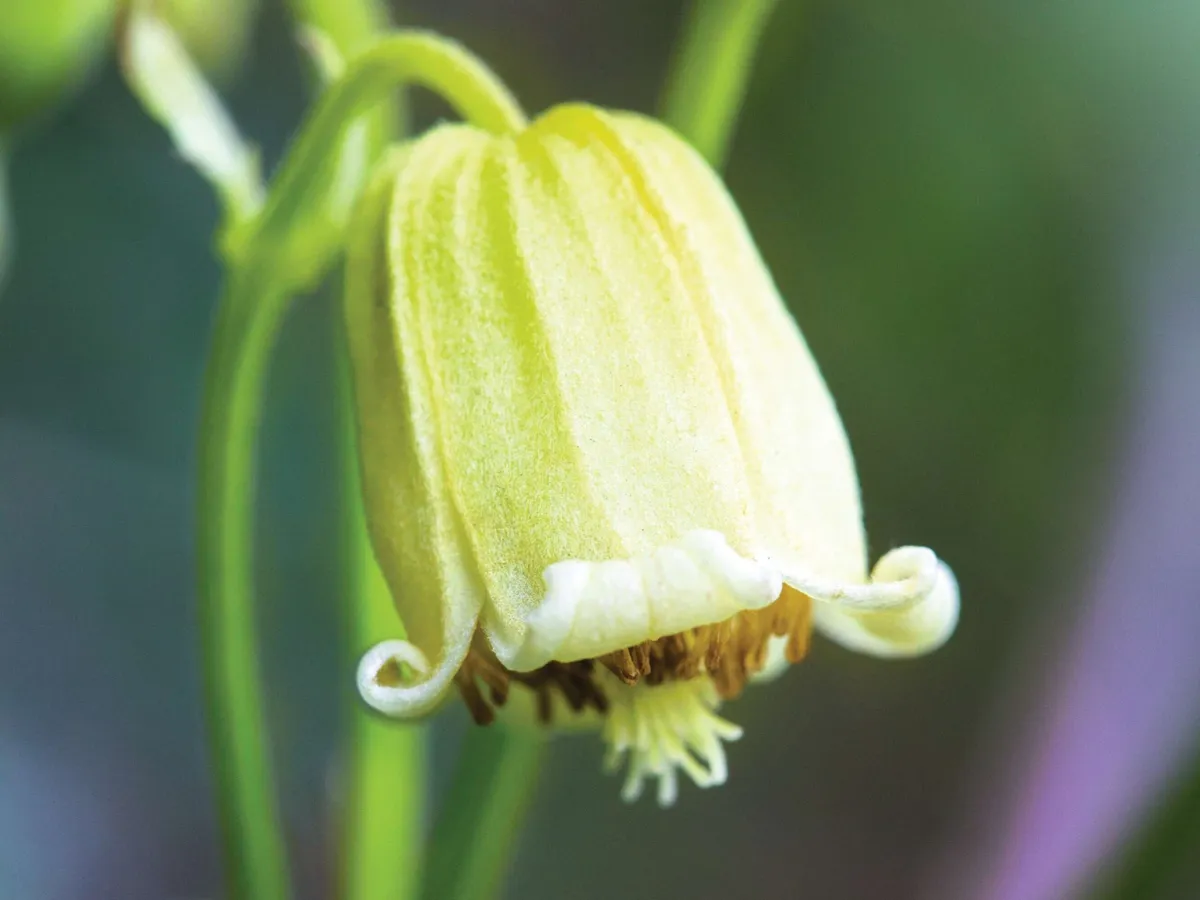
A free-flowering species from China and Nepal with coarsely textured leaves and masses of small, nodding, delicate, pale-yellow, cowslip-scented flowers in autumn. Can be pruned back hard in winter or early spring to grow and flower again the following summer. Needs a substantial host or structure to support it. AGM. H 4m. S 2m. PT Climber. C Fertile, well-drained soil; full sun to part shade. SI September – October. HR RHS H5, USDA 6a-9b.
Crataegus pentagyna
An elegant, small hawthorn with a splaying, rangy habit and widely spaced branches. Has handsome lobed leaves, greyish in colour. Large, creamy-white flowers fill the plant’s long limbs in May
and June, followed by shiny purplish-black fruit. Adored by flying insects, making it the centre of attention when in bloom. H 3m. S 4m. PT Tree. C Tolerant of a wide range of soils; full sun to part shade.
SI Blossom: May – June; fruit: autumn. HR RHS H7, USDA 4a-7b.
Farfugium japonicum

Native to the streams and shores of China, Korea and Japan with dramatic kidney-shaped, deeply glossy green leaves. Makes mounds of bold, shiny foliage, lighting up the darkest corners. In late summer, the clumps are decorated with sprays of deep-yellow daisies. The form ‘Giganteum’ has bigger leaves. Not completely hardy except in the south. H 50cm. S 60cm. PT Perennial. C Best in soil rich with organic matter; tolerant of dry shade. SI Foliage: year round; flowers: autumn – winter. HR RHS H3, USDA 9a-11.
Ferula communis
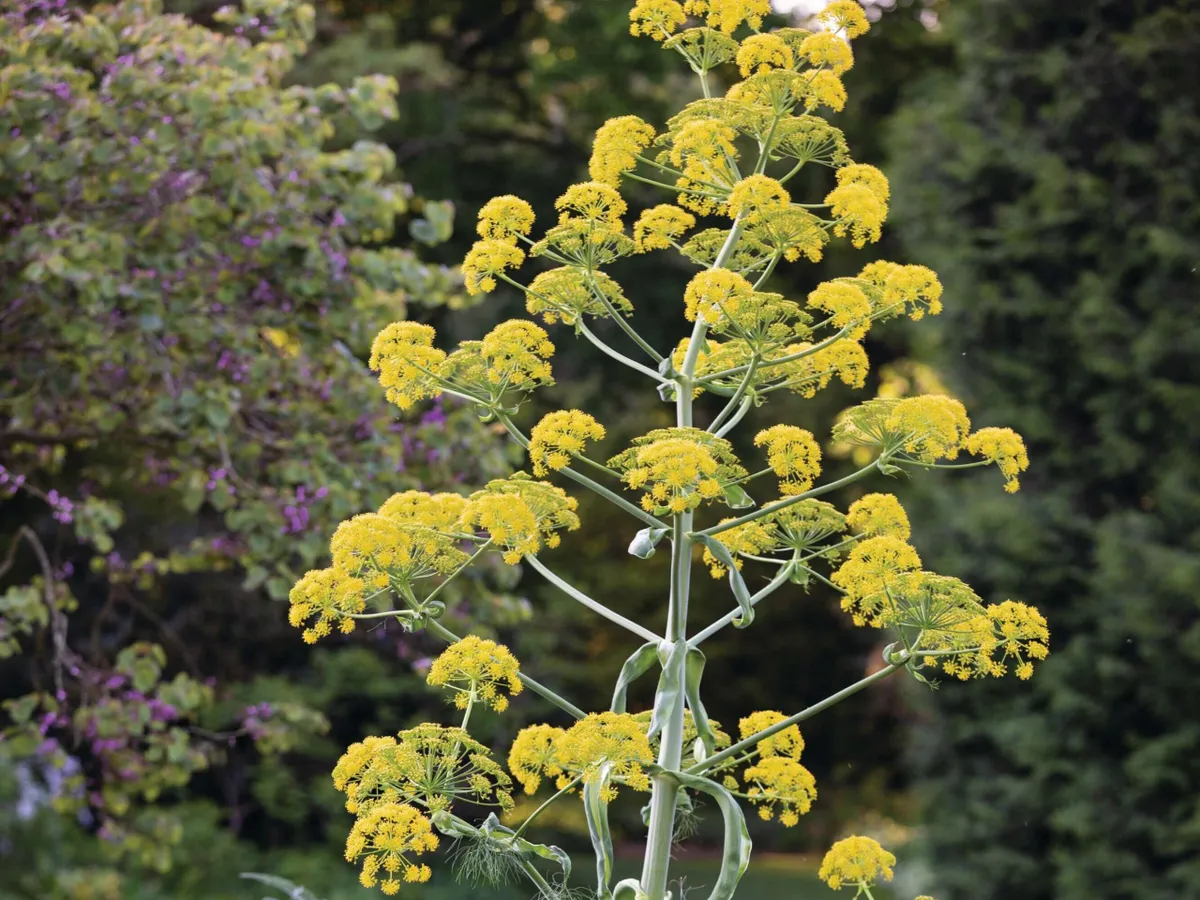
Great Dixter’s signature plant. Huge plumes of finely cut green foliage emerge in December. Colossal stems covered in a glaucous bloom erupt from the centre in April, reaching 4m high, with widely spaced branches carrying lime-green umbels in May and June. Seedlings are variable and hybrids give mammoth plants. Loved by all insects. H 4m. S 1m. PT Perennial. C Well-drained soil; full sun.
SI June – July. HR RHS H4, USDA 6a-9b.
Geranium maderense

Native to Madeira, this tender geranium is huge with large, herb robert-like leaves held on stiff, fleshy stems. It makes a rounded mass of foliage, from which emerge large panicles carrying a profusion of rich pink flowers on hairy stems. The old leaf petioles dig themselves into the soil, holding the plant upright. Dies after flowering and setting seed. Not hardy except in the most sheltered spot. AGM. H 1.5m. S 1m. PT Monocarpic herb. C Well-drained soil; full sun. SI Foliage: year round; flowers April – June. HR RHS H2, USDA 9a-11.
Hedychium ‘Tara’

Terminal clusters of fragrant, richly exotic, orange flowers are densely packed in racemes and decorated with prominent stamens. Dies down in winter to underground rhizomes that are best protected with a deep mulch, unless you’re in a mild climate. AGM. H 2m. S 60cm. PT Perennial. C Moist but well-drained, humus-rich soil; full sun to part shade. SI July – November. HR RHS H4, USDA 8a-11.
Himalayacalamus falconeri

The most graceful of all the bamboos, with thin, olive-green canes flushing charcoal at each node; naked in their first year, fully furnished with slender green leaves in the second. The second-year stems arch to the ground, making a fountain of foliage. Clump-forming and only hardy in the south. Second-year canes should be cut to the ground every spring, leaving only the naked canes behind. H 3m. S 3m. PT Bamboo. C Moist but well-drained soil rich in organic matter; full sun to part shade. SI Year round. HR RHS H3, USDA 8b-11.
Melanoselinum decipiens

An imposing monocarpic evergreen with giant parsley-like leaves on strong stalks, distinctly scarred at intervals as the old leaves drop off. The young foliage is bronze tinged; the flowers are pink umbels carried above the foliage. Attractive black seeds take the place of the flowers as the plant turns biscuit brown, while remaining attractive through the winter. H 1.5m. S 1m. PT Perennial. C Moist but well-drained soil; full sun to part shade. SI Foliage: year round; flowers: April – May. HR RHS H2, USDA 8b-11.
Paris polyphylla
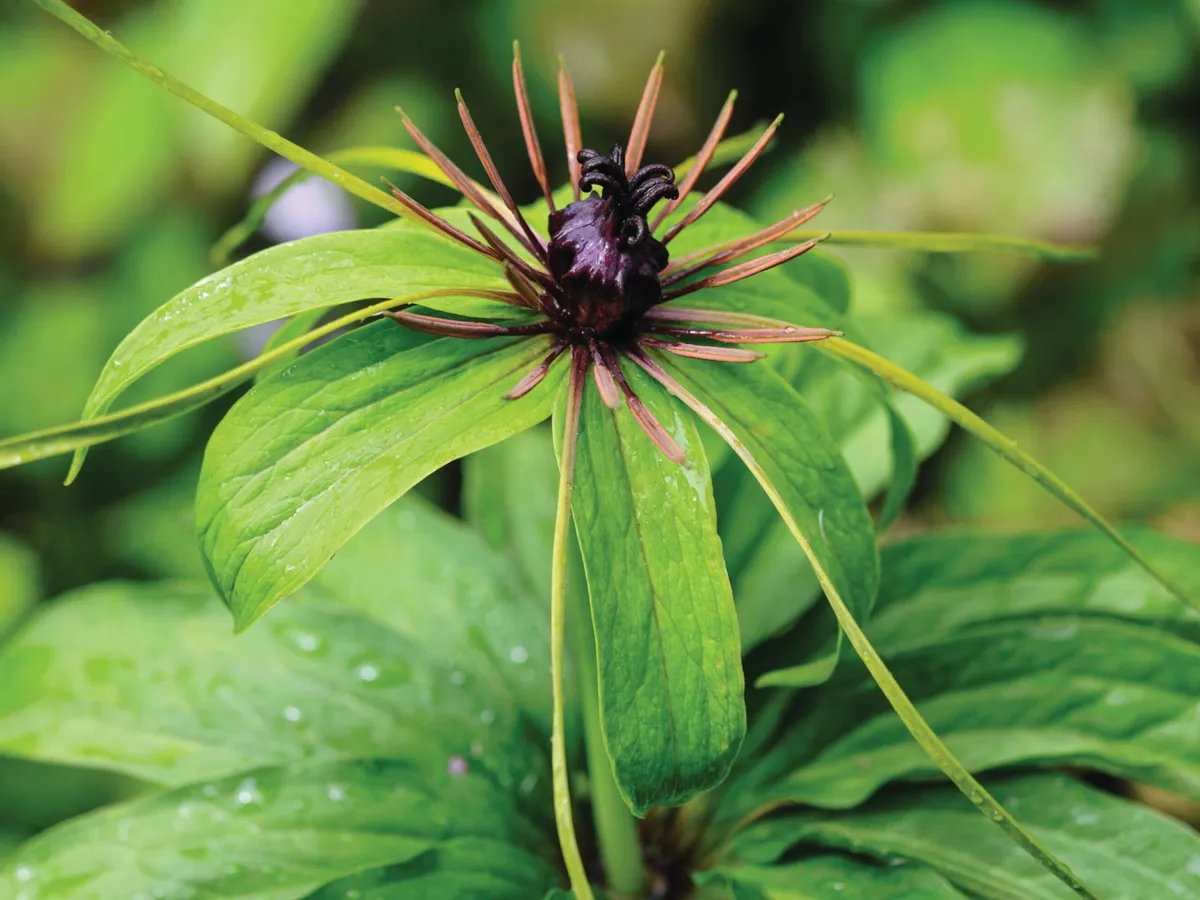
Whorls of dramatic, lanceolate, green foliage decorate all up the stem, terminating in a most curious and complex flower of bold, green sepals and dainty, long, arching, thread-like, yellow-green petals around a dark maroon and brown bulbous knob. A herbaceous perennial, slow to build up, eventually making a sizeable clump. Bright-red berries follow the flowers before the plant collapses for winter. H 1m. S 40cm. PT Perennial. C Rich and fertile soil; full shade. SI May – June. HR RHS H4, USDA 7a-9b.
Trevesia palmata
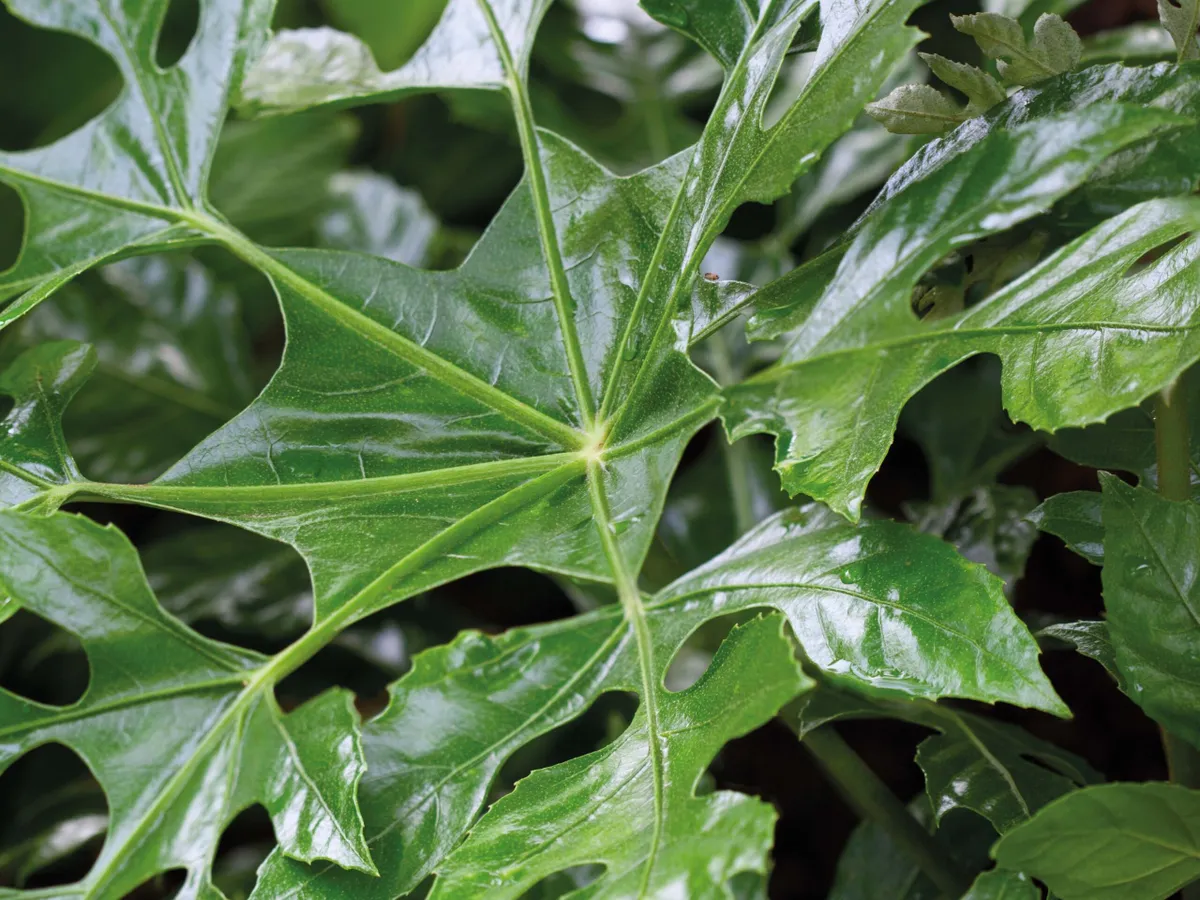
An exceptional foliage plant, with glossy green foliage that is 30-45cm wide, webbed and finely cut, resembling a large snowflake. The lacey young leaves are a dusky pale brown turning green as
they age. Makes a single-stemmed tree up to 7m high. Not winter hardy, needing greenhouse protection. H 7m. S 1m. PT Tree. C Humus-rich, moist, but well-drained soil; best grown in semi-shade. SI Year round. HR RHS H1C, USDA 10a-12.